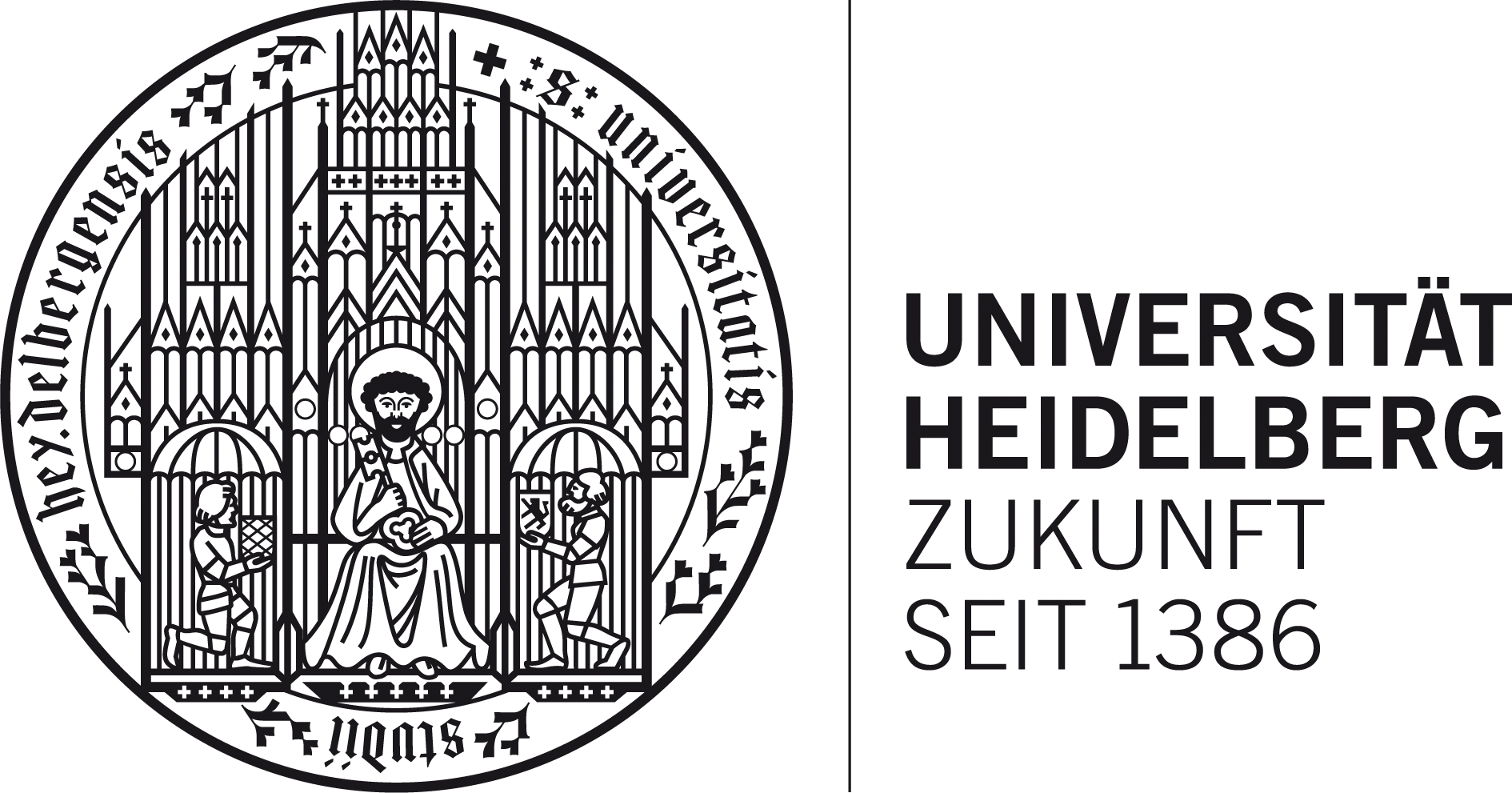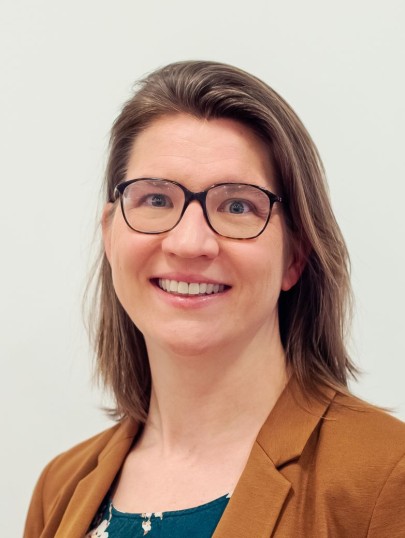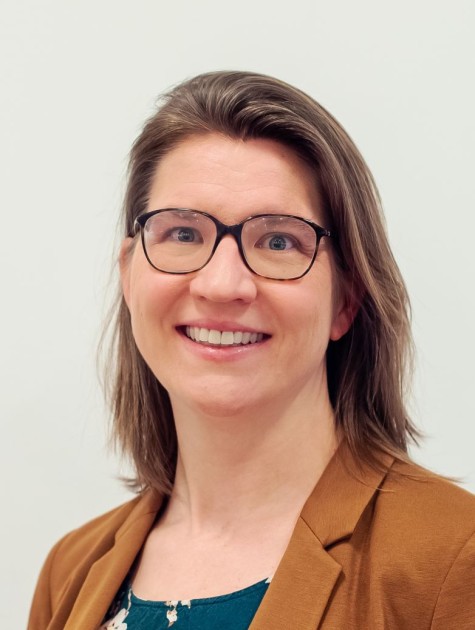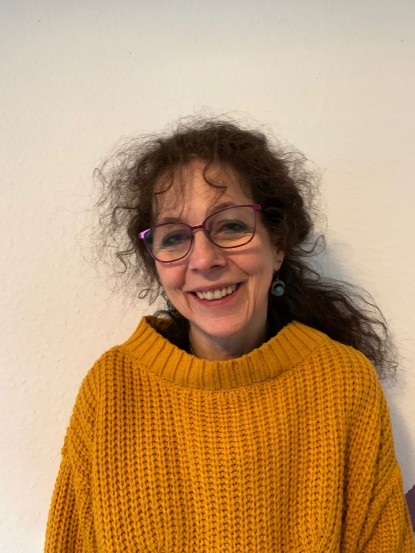Prof. Dr. Heike Vallery
TU Delft and Erasmus MC, NL
Bio: Heike Vallery received her Dipl.-Ing. degree in Mechanical Engineering (with honors) from RWTH Aachen University in 2004. Since then, she has been working on robot-assisted rehabilitation and prosthetic legs, in close collaboration with clinicians and partners from industry. She received her Dr.-Ing. from the Technische Universität München in 2009 and then continued her academic career at ETH Zürich and later at Khalifa University in Abu Dhabi. Today, as a full professor at TU Delft, she works on minimalistic and unconventional concepts to support human gait and balance. Since November 2019, she also holds a honorary professorship at the Department for Rehabilitation Medicine at Erasmus MC in Rotterdam. Heike Vallery received numerous fellowships and awards, such as the 1st prize of the euRobotics Technology Transfer Award 2014, and recently an Alexander-von-Humboldt professorship, to return to RWTH Aachen.
Title: “Subtractive design of technology to assist gait and balance”
Abstract:When applying robotics with the aim to empower motor-impaired individuals, often highly complex technology results, which hinders implementation in daily life. This talk outlines how implicit assumptions and long-standing design paradigms can lead to unnecessary complexity, and how simpler solutions might more readily be found. For example, our surprising experimental results with robotic body-weight support systems challenge assumptions on what humans need or prefer in order to walk or balance better. As one potential mechanism to prevent complexity at the outset, co-creation with users, in combination with embracing underactuation, may deliver surprisingly simple, effective, and commercially viable solutions in a short time frame. The principles will be derived and illustrated using a range of examples, from body weight support systems to wearable technology for fall injury prevention.
Prof. Dr. Denys Makarov
Helmholtz-Zentrum Dresden-Rossendorf e.V., Institute of Ion Beam Physics and Materials Research
Bio: Prof. Denys Makarov received his Master Degree (2005) at the National University of Kyiv in Ukraine, followed by a Ph.D. in physics (2008) from the University of Konstanz in Germany. Currently, he is head of department “Intelligent materials and systems” at the Helmholtz-Zentrum Dresden-Rossendorf and leads the Helmholtz Innovation Lab FlexiSens. With his activities, Denys Makarov made a decisive contribution to the development of the field of curvilinear magnetism and stimulated research on spintronics on flexible, bendable and stretchable surfaces. Mechanically flexible and skin-conformal magnetic field sensors enable new application scenarios for human-machine interfaces, eMobility and medicine. These activities are supported via major national and European projects. Denys Makarov is Senior Member of the IEEE and Fellow of the Young Academy of Europe.
Talk Title: Flexible, printable and self-healable magnetic field sensors for soft robotics and human-machine interfaces
Abstract: Composites consisting of magnetic fillers in polymers and elastomers enable new types of applications in soft robotics, reconfigurable actuation and sensorics. In particular, soft-bodied robots emerge as the closest synthetic system analogous to living organisms mimicking their mechanical behavior and going beyond in performance. We will introduce lightweight, durable, untethered and ultrafast soft-bodied robots performing large amplitude of deformations at high frequencies of up to 100 Hz and exhibit high specific energy density [1]. Our soft-bodied robots can walk, swim, levitate, and transport cargo being driven using external magnetic fields. This inspires new classes of soft robots that impact biosensorics, biological tissue engineering, confined and high-speed mechanical (tissue) manipulation, and serve as working models to study fast biomechanical processes like hydro- and aero- dynamics of fast-moving organisms.
These mechanically active structures are typically designed to work in a specific prior defined parameter range and can malfunction when the conditions are changed. Specifically for magnetic soft robots, the change of the intrinsic magnetic properties due to temperature activations or time relaxation can lead to modifications in the actuation pattern. We present ultrathin and reconfigurable magnetic origami actuators based on a composite consisting of shape memory polymers and magnetic microparticles [2]. Self-sensing is achieved by laminating ultrathin magnetosensitive e-skins [3] on soft origami actuators. The sensor assesses the magnetic state of the actuator (magnetized vs. non-magnetized) and decides on its actuation pattern even before the actual actuation is done experimentally. Furthermore, the sensor enables communication of the actuator with external devices (rotation stage, electromagnets) for self-guided assembly of an initially flat layout and provides the possibility to control the sequentiality and quality of the folding process.
Magnetic composites can be readily used to realise not only actuators but also magnetic field sensors. We demonstrate that printed magnetoelectronics can be stretchable, skin-conformal, capable of detection in low magnetic fields and withstand extreme mechanical deformations [4,5]. We feature the potential of our skin-conformal sensors in augmented reality settings [6,7], where a sensor-functionalized finger conducts remote and touchless control of virtual objects manageable for scrolling electronic documents and zooming maps under tiny permanent magnet.
Furthermore, we put forth technology to realise magnetic field sensors, which can be printed and self-heal upon mechanical damage [8]. This opens exciting perspectives for magnetoelectronics in smart wearables, interactive printed electronics. Furthermore, this research motivates further explorations towards the realisation of 3D printed magnetic field sensors.
[1] X. Wang et al., Untethered and ultrafast soft-bodied robots. Communications Materials 1, 67 (2020).
[2] M. Ha et al., Reconfigurable magnetic origami actuators with on-board sensing for guided assembly. Adv. Mater. 33, 2008751 (2021).
[3] G. S. Canon Bermudez et al., Magnetosensitive e-skins for interactive devices. Adv. Funct. Mater. 31, 2007788 (2021).
[4] M. Ha et al., Printable and Stretchable Giant Magnetoresistive Sensors for Highly Compliant and Skin-Conformal Electronics. Adv. Mater. 33, 2005521 (2021).
[5] E. S. Oliveros Mata et al., Dispenser printed bismuth-based magnetic field sensors with non-saturating large magnetoresistance for touchless interactive surfaces. Adv. Mater. Technol. 7, 2200227 (2022).
[6] J. Ge et al., A bimodal soft electronic skin for tactile and touchless interaction in real time. Nature Communications 10, 4405 (2019).
[7] G. S. Canon Bermudez et al., Electronic-skin compasses for geomagnetic field driven artificial magnetoception and interactive electronics. Nature Electronics 1, 589 (2018).
[8] R. Xu et al., Self-healable printed magnetic field sensors using alternating magnetic fields. Nature Communications 13, 6587 (2022).
Prof. Dr. Gregory Sawicki
Georgia Institute of Technology
Bio: Dr. Gregory S. Sawicki is an Associate Professor at Georgia Tech with appointments in the Schools of Mechanical Engineering and Biological Sciences and the Institute for Robotics and Intelligent Machines (IRIM). Sawicki also spends part of his effort as a Senior Research Scientist at the Institute for Human and Machine Cognition (IHMC) in Pensacola, FL.
Dr. Sawicki directs the Human Physiology of Wearable Robotics (PoWeR) laboratory—where the goal is to combine tools from engineering, physiology and neuroscience to discover neuromechanical principles underpinning optimal locomotion performance and apply them to develop lower-limb robotic devices capable of improving both healthy and impaired human locomotion (e.g., for elite athletes, aging baby-boomers, post-stroke community ambulators).
By focusing on the human side of the human-machine interface, Sawicki and his group have begun to create a roadmap for the design of lower-limb robotic exoskeletons that are truly symbiotic---that is, wearable devices that work seamlessly in concert with the underlying physiological systems to facilitate the emergence of augmented human locomotion performance.
Talk Title: Pushing beyond locomotion economy – What can exoskeletons do on the shortest and longest timescales?
Abstract: The goal of the Human Physiology of Wearable Robotics (PoWeR) Laboratory is to discover and exploit key principles of locomotion neuromechanics in order to build wearable devices that can augment intact and/or restore impaired human locomotion. Performance goals include improving economy, stability and agility of human movement.
Over the last `5+ years, enabled by non-invasive dynamic ultrasound imaging, our lab has taken a deep dive ‘under the skin’ to reveal how exoskeletons can shift muscle-level contractile dynamics and improve locomotion economy. While reducing metabolic effort is an important use-case for exoskeletons, our muscle-level perspective has motivated a number of next questions that go beyond metabolic energetics including: How do exoskeletons impact sensory feedback? or Can exoskeletons improve balance recovery? and Can novel exoskeleton controllers using real-time, ‘muscle in the loop’ feedback shape in vivo muscle structure-function over long-timescales (e.g. months to years)? Along these lines, I’ll share some snapshots of our more recent work focusing on experiments to: (i) evaluate ankle and hip exoskeleton systems during unsteady conditions, when balance is challenged and (ii) characterize long-term structure-function effects due to daily-use of wearable devices.
Prof. Dr. C. David Remy
University of Stuttgart
Bio: Prof. David Remy is a Full Professor at the Institute for Nonlinear Mechanics at the University of Stuttgart in Germany. He received his Ph.D. in 2011 from ETH Zurich (Prof. Roland Siegwart), and holds a M.Sc. in Mechanical Engineering from the University of Wisconsin, Madison and a Diploma in Engineering Cybernetics from the University of Stuttgart. Prior to his appointment in Stuttgart, Dr. Remy was an Associate Professor at the University of Michigan, Ann Arbor. He is a member of the German National Academic Foundation and a recipient of the NSF CAREER award. His research interests include the design, simulation, and control of legged robots, exoskeletons, and other nonlinear systems. Drawing inspiration from biology and biomechanics, he is particularly interested in the effects and exploitation of natural dynamic motions, the role of different gaits, and the possibility of force/torque controllable systems; both in conceptual models and in hardware realizations.
Talk Title: From Gaits to Modes, the Role of Mechanical Dynamics in Legged Locomotion
Abstract: In my research, I seek to systematically exploit mechanical dynamics to make future robots faster, more efficient, and more agile. Drawing inspiration from biology and biomechanics, I design and control robots whose motion emerges in great part passively from the interaction of inertia, gravity, and elastic oscillations. Energy is stored and returned periodically in springs and other dynamic elements, and continuous motion is merely initiated and shaped through the active actuator inputs. In this context, I am particularly interested in questions of gait selection. Should a legged robotic system use different gaits at different desired speeds? If so, what constitutes these gaits, what causes their existence, and how do they relate to gaits observed in biology?
In this talk, I want to highlight a potential relationship between fully passive mechanical oscillation modes that exist in highly simplified and energetically conservative models of legged systems and the gaits that we can observe in humans, animals, and in legged robots. I also want to discuss how these nonsmooth nonlinear normal modes can be used as a basis to develop energy optimal gaits for legged robotic systems.
Dr. Jose González
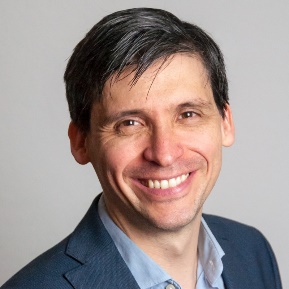
Head of Research in Germany, Ottobock
Bio: Dr. González is heading the Research Hub in Germany, which aims at translating novel ideas into successful products. His group works on several projects in the field of lower and upper limb Prosthetics, Orthotics and Exoskeletons for the healthcare and manufacturing domains. Dr. González is also the coordinator of the EU project SimBionics and PI for several other EU and German funded projects. He obtained a degree in Electronic Engineering Technology Institute of Costa Rica, focused on embedded systems and automatic control. He obtained the master degree in Artificial System Engineering (2009) and a PhD in Medical System Engineering (2012) in the laboratory of Bio-robotics Assistive Devices from Chiba University, Japan. In 2006 he was granted Japan’s MEXT scholarship and in 2010 he was granted the JSPS young research fellowship. In 2013 he was a postdoc fellow researcher in the Research Center for Frontier Medical Engineering in Chiba University, as well as a visiting researcher in the Neuro-rehabilitation department of the Medical University of Göttingen chaired at that time by Prof. Dario Farina. From 2013 – 2017, he worked as a Research Fellow in the Neural Rehabilitation group of the Cajal institute in the Spanish National Research Council in Spain, where he was involved in numerous funded research projects.
Talk Title: From Ideas to Innovations
Abstract: Implementing an idea into a working prototype is hard, but it is harder to translate this implementation into a successful product. In this context, academic research institutions produce large amounts of interesting research results in the form of knowledge and prototypes. Results that can lead to innovative products, services or processes. However, very often the industry cannot just take such a result and develop an innovation out of it. The gap between academic achievement and the point a company can take over with reasonable risk is usually large. This gap can be reduced or even eliminated by setting up a research collaboration between academia and industry which fosters knowledge transfer. Knowledge transfers from academic to industry and from industry to academia. In this talk, I present examples of such collaborations together with best practices and lessons learned.
Prof. Dr. Ulrich Ebner-Priemer
Karlsruhe Institute of Technology
Bio: Professor Dr Ulrich Ebner-Priemer is full professor and the head of the mental mHealth Lab at KIT, a leading institution on mHealth approaches for mental disorders. His work is characterized by a methodological focus on Ambulatory Assessment (also called mHealth, Ecological Momentary Assessment, or Experience Sampling Method). Phenomena of mental health are studied in everyday life (real-life) in real-time using psychophysiological methods (objective) and time-sensitive analysis (dynamics). He focuses on a) a multimodal operationalization of phenomena of mental health in everyday life using subjective self-reports (e-diaries), peripheral physiological signals (e.g. ECG, EDA), and behavioural (accelerometry, GPS) signals and mobile sensing; b) real-time analysis of psychophysiological parameters to trigger electronic diary assessments (e.g., activity triggered diaries; GPStriggered diaries) or feedback; c) analysis of dynamical processes (affective instability); and d) real-time interventions in daily life. Our unique expertise is on energy-efficient real-time interfaces to enable automated real-time data analysis and feedback. Currently, Prof. Ulrich Ebner-Priemer’s lab provides the mobile technological framework for several multicenter trials: H2020 CoCA and H2020 Eat2beNICE (ADHD), TRR 256 (alcoholism), BipoLife (Bipolar disorder), Release (PTSD), etc. Prof. Ulrich Ebner-Priemer published more than 120 papers on mHealth, including outlets like Nature Neuroscience, Lancet Psychiatry, or Annual Review of Clinical Psychology. He was president of the Society for Ambulatory Assessment (2012-2017) and is currently the chair of the ECNP network “Digital Health applied to the clinical research of brain disorders”.
Talk Title: Ambulatory Assessment: Monitoring real-life behavior
Abstract: Real-time mobile smartphone sampling of behavior, physiological parameters and psychological states, sometimes also called Ambulatory Assessment, has become more and more popular, offering two key advantages: 1) Real time assessment eliminates retrospective biases. 2) Real life assessment enables to investigate symptomatology in the most important context: the everyday life´s of our patients. In my talk, I will start explaining the key advantages of ambulatory assessment and demonstrate the ambulatory toolbox, which covers e-diaries, physiological monitoring, cognitive tasks in everyday life, mobile sensing, tracking of physical behavior, just to mention a few. I´ll conclude my talk with real-time analyses and feedback possibilities, to combine passive monitoring with active, e-dairy assessments. Those approaches are especially advantageous as enriching e-diaries with continuous mobile sensing allows for real-time analyses, which in turn can triggering additional question or interventions at the right time point. Conversely, enriching mobile sensing with momentary assessments enables us to understand the psychological content of mobile sensing parameters.
Prof. Dr. Max Ortiz Catalan
Center for Bionics and Pain Research, Chalmers University of Technology
Bio: Prof. Max Ortiz Catalán, Ph.D., is the Founder and Director of the Center for Bionics and Pain Research (@CBPR.se) and the Professor of Bionics at Chalmers University of Technology, Sweden. He has received several honors for his work, notably the “Swedish Embedded Award” by the Swedish Electronic Association in 2018, the “Brian & Joyce Blatchford Award” by ISPO in 2017, the “Delsys Prize” by Delsys in 2016, and the “European Youth Award” by the European Council in 2014. His research includes bioelectric signals acquisition electronics (analog and digital); bioelectric signal processing and machine learning algorithms for decoding motor volition and control; neuromuscular interfaces; neurostimulation for sensory feedback; bone-anchored prostheses and osseointegration; and virtual and augmented reality for neuromuscular rehabilitation and the treatment of phantom limb pain.
Talk Title: Highly integrated bionic prosthesis,
Abstract: Prof. Ortiz Catalan will present clinically viable technologies to restore quality of life to patients with sensorimotor impairment. He led the development of the first prosthetic arm integrated directly into a patient’s bone, nerves, and muscles. The first patient implanted with this neuromusculoskeletal interface has used it without interruption for over 10 years in everyday life. Patients implanted with this new generation of prostheses are also provided with intuitive sensory feedback via direct nerve stimulation. Direct skeletal attachment via osseointegration, along with control and sensory feedback via implanted neuromuscular electrodes, can now be provided in a self-contained prosthesis for use in daily life. Originally developed for above-elbow amputations, this technology is now being implemented for below-elbow and lower limb amputations.
Dr. Marjolein van der Krogt
Amsterdam UMC, Department of Rehabilitation Medicine, Amsterdam Movement Sciences
Bio: Marjolein van der Krogt is director of the Clinical Movement Analysis lab at the Amsterdam University Medical Centers in The Netherlands. She obtained a cum laude MSc degree in Human Movement Sciences and a PhD in Rehabilitation Medicine, focusing on musculoskeletal simulation of gait problems in children with cerebral palsy. During her postdoc period, she was a visiting scholar at Stanford University neuromuscular biomechanics lab. In her combined function as head of the clinical gait lab and senior researcher, she strives towards integrating research and clinical care. This translational research approach helps to perform truly patient-oriented research projects and improve health care directly by research outcomes. Her research line focuses on a better understanding of movement deviations and their underlying neural and musculoskeletal impairments in children and adults with neurological disorders. To this end, she developed and applied novel technologies including the use of patient-specific musculoskeletal modeling and computer simulations to obtain in-depth understanding of muscle function during gait. In close collaboration with industry, she was involved in the development of an interactive gait lab, which allows for real-time gait analysis, performed on a treadmill placed within a virtual reality environment. Exploiting these new opportunities, she performed several studies on the use of real-time feedback to improve walking performance in children with neurological disorders, and the use of mechanical perturbations to assess the role of spasticity during gait.
(Prediction of) optimal AFO properties in clinical practice
Abstract: Ankle-foot orthoses (AFO’s) are frequently prescribed in patients with neurological disorders, such as cerebral palsy or multiple sclerosis, as well as in neuromuscular disorders such as poliomyelitis or Charcot-Marie-Tooth. To take full advantage of such AFO’s, tuning of AFO properties such as bending stiffness, heel height, and neutral angle is essential to optimize both gait biomechanics and energy cost of walking. In this talk, I will present our recent predictive simulation studies as well as experimental work, in which we aimed to unravel the relation between various AFO properties and gait characteristics. Furthermore, I will discuss how these principles can be implemented in clinical practice, to prescribe the optimal AFO for each individual patient.
